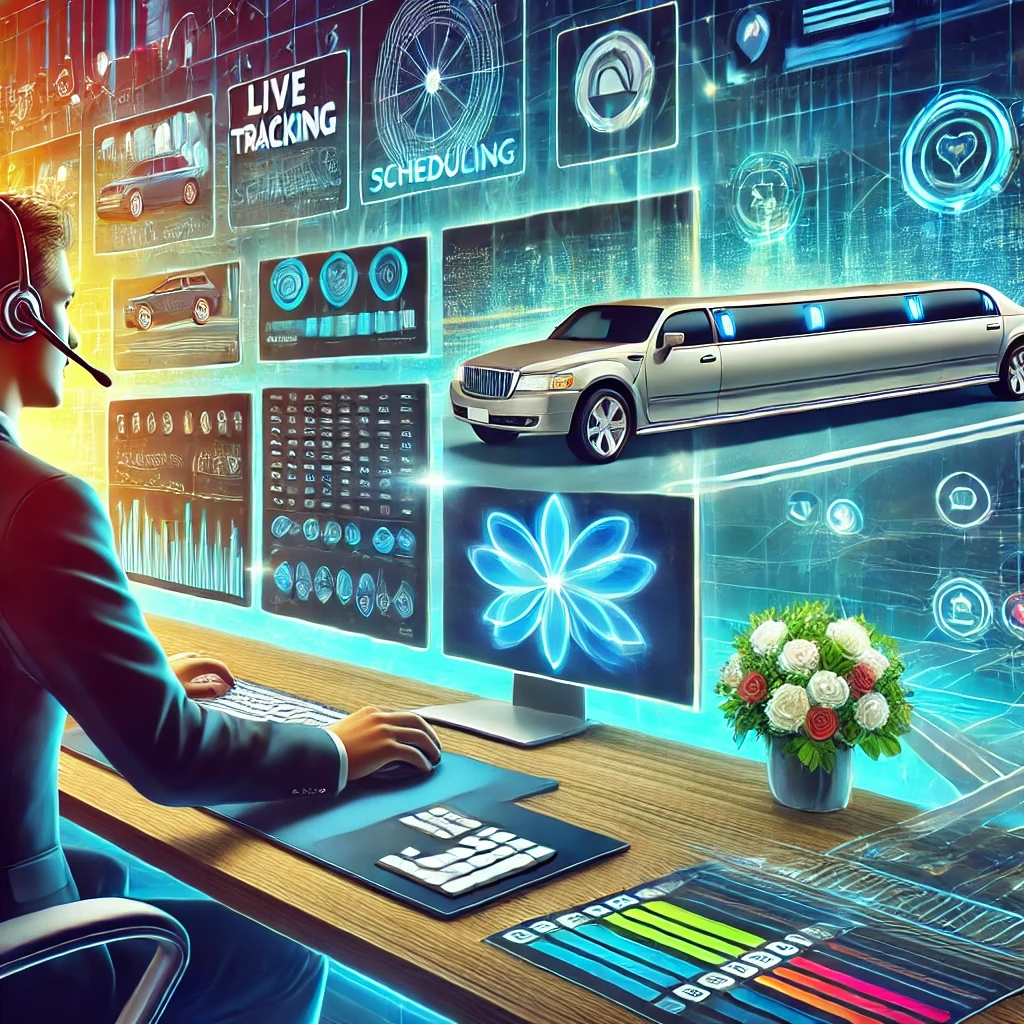In the luxury transportation industry, clients expect not only high-end vehicles but also outstanding service from their chauffeurs. “Chauffeur Etiquette and Discipline” are core pillars that define an exceptional client experience. When properly executed, they ensure professionalism, client comfort, and satisfaction. Let’s dive into a comprehensive guide that highlights these vital aspects, covering both the challenges and solutions to help chauffeurs stand out.
1. Dress Code and Appearance: Crafting a Lasting First Impression
Issue: First impressions are crucial in the limousine industry, where clients anticipate a level of class and sophistication that mirrors the service they’re paying for. However, a lack of understanding of professional attire can lead to inconsistency, compromising the client’s initial impression.
Solution: Establishing a mandatory dress code, typically consisting of a well-fitted suit, polished shoes, and neutral-colored accessories, is essential. Companies should clarify grooming expectations, including trimmed hair, clean nails, and general neatness. Beyond appearance, a confident posture and calm demeanor further reinforce professionalism. For example, chauffeurs can be trained to maintain a poised stance when opening doors or waiting for clients to finish appointments, presenting a polished image throughout the interaction.
Regular quality checks by dispatch managers ensure these standards are consistently upheld. When chauffeurs see that these guidelines are reinforced company-wide, it creates a shared commitment to professionalism, fostering an environment where appearance is a priority. Implementing a routine where chauffeurs check their appearance before client interactions can further contribute to delivering consistent first impressions.
2. Punctuality and Time Management: Ensuring Reliability and Trust
Issue: In the transportation industry, being late can mean more than a missed schedule—it can erode a client’s trust. Factors such as heavy traffic, unexpected delays, and route unfamiliarity can disrupt even the best-laid plans. However, clients expect punctuality, and anything less can affect the reputation of the service.
Solution: Chauffeurs should develop the habit of arriving at least 15 minutes early for every booking. They can make use of GPS and traffic monitoring tools, as well as stay informed on real-time traffic updates through reliable dispatch support systems. Establishing partnerships between chauffeurs and dispatch centers can streamline this process, ensuring timely communication about potential delays and alternative routes.
By planning well in advance and creating a “buffer” in schedules, chauffeurs are better prepared to handle delays calmly and professionally. Emphasizing proactive planning also encourages chauffeurs to manage their time more effectively, reinforcing the importance of punctuality in delivering a high-quality experience.
3. Greeting Clients with Respect: Establishing Rapport from the Start
Issue: The initial greeting is a crucial moment that shapes a client’s perception of the service. An unenthusiastic or unprofessional approach can make clients feel undervalued, negatively impacting their experience.
Solution: Chauffeurs should be trained to greet clients with a warm smile and an authentic expression of welcome. Addressing clients respectfully, such as using “Mr.” or “Ms.,” is a small yet impactful gesture that demonstrates courtesy and professionalism. This practice also sets the tone for the rest of the journey, making clients feel respected and at ease.
Dispatch services can remind chauffeurs to adopt a consistent approach in greetings to maintain a standard. When chauffeurs project warmth and respect, they immediately establish rapport, making clients feel comfortable and valued right from the beginning.
4. Driving Style and Safety: Prioritizing Comfort and Security
Issue: A chauffeur’s driving style significantly influences a client’s comfort level. Sudden braking, fast turns, or excessive acceleration can make passengers uneasy, compromising their experience.
Solution: Professional chauffeur training should emphasize defensive driving techniques. Smooth acceleration, gradual braking, and maintaining a steady speed are essential skills for creating a comfortable ride. Chauffeurs should also practice anticipating traffic patterns to reduce the need for abrupt maneuvers. By understanding the importance of a seamless, stress-free ride, chauffeurs can prioritize passenger comfort, which is often more valued than speed.
Working with dispatch teams to allow time buffers in schedules can help prevent chauffeurs from feeling pressured to rush, further promoting a smooth and pleasant journey. When chauffeurs know they can take their time, they can concentrate on safety and client comfort, leading to a more relaxed experience for all.
5. Confidentiality and Discretion: Building Client Trust Through Privacy
Issue: In the luxury transport sector, clients expect confidentiality and discretion, particularly with high-profile individuals. Any breach of privacy—intentional or accidental—can severely damage the reputation of the chauffeur and the service provider.
Solution: Chauffeurs should understand that confidentiality is a foundational aspect of their role. Companies should set clear guidelines on avoiding unnecessary conversations about clients, both during and after the ride. Dispatch support can play a role by ensuring that chauffeur-client interactions are discreetly monitored, reminding chauffeurs of the importance of privacy.
If clients wish to converse, chauffeurs should engage only within the client’s comfort zone, being mindful of topics that might seem intrusive. Consistently respecting client boundaries cultivates a reputation of trustworthiness, which is invaluable in the luxury transport industry.
6. Effective Communication: Balancing Professionalism and Approachability
Issue: Striking a balance between over-talking and under-engaging can be challenging. Excessive conversation may intrude on a client’s privacy, while silence can feel uncomfortable.
Solution: Chauffeurs should be trained to gauge a client’s interest in conversation, beginning with brief, polite exchanges to determine their comfort level. If a client is more reserved, the chauffeur should respectfully maintain silence unless prompted otherwise. Alternatively, if clients show interest in conversation, chauffeurs can respond thoughtfully, avoiding overly personal topics.
Dispatch centers can guide chauffeurs on specific communication protocols based on client preferences, helping maintain the right balance. Mastering this skill enhances the client’s journey by tailoring communication to individual preferences, showing attentiveness without intrusiveness.
7. Responding to Special Requests: Going the Extra Mile
Issue: Limousine clients often have unique requests, from specific routes to in-car amenities. Not every chauffeur is adept at fulfilling these without assistance, which may affect the service quality.
Solution: To handle special requests smoothly, chauffeurs should be trained in flexibility and proactive problem-solving. Dispatch services can help by passing client preferences directly to chauffeurs, ensuring they are well-prepared before pick-up. For example, if a client requests a specific music playlist or certain refreshments, chauffeurs can arrange these details, creating a tailored, memorable experience.
Anticipating client needs and accommodating special requests without hesitation shows clients they are valued, building trust and satisfaction with the service.
8. Problem Solving Under Pressure: Handling Unexpected Situations
Issue: From traffic issues to vehicle malfunctions, unexpected situations can create stress, leading chauffeurs to make hasty or unprofessional decisions.
Solution: Training chauffeurs to stay calm and resourceful under pressure is vital. Implementing a direct communication line with dispatch allows chauffeurs to seek assistance when handling unexpected events. For instance, if a car issue arises, dispatch can immediately send a backup or assist in coordinating roadside assistance, minimizing client inconvenience.
Instilling confidence in chauffeurs through problem-solving training equips them to handle challenges effectively, ensuring clients feel safe and reassured, even in unanticipated situations.
9. Maintaining a Clean and Welcoming Vehicle: Creating a Professional Environment
Issue: Clients often judge the quality of service based on the vehicle’s cleanliness. A dirty or cluttered car can leave clients dissatisfied, regardless of the chauffeur’s conduct.
Solution: Maintaining a pristine vehicle should be part of every chauffeur’s routine. They should check for cleanliness before every client pick-up, ensuring no trash, dust, or fingerprints compromise the car’s appearance. Working with dispatch teams to establish cleaning standards and protocols can reinforce the importance of this practice.
A spotless vehicle reflects attention to detail and respect for clients, enhancing their experience and solidifying the chauffeur’s reputation for excellence.
10. Ongoing Professional Development: Staying Updated on Best Practices
Issue: As the transportation industry evolves, chauffeurs must adapt to new expectations, trends, and technologies. Without ongoing training, chauffeurs may find it challenging to meet modern standards.
Solution: Regular workshops and training sessions in etiquette, defensive driving, and new technologies keep chauffeurs at the top of their game. Dispatch services and limousine companies can coordinate with training programs to support ongoing professional growth, ensuring chauffeurs remain equipped with the skills and knowledge to deliver top-tier service.
Embracing continuous development allows chauffeurs to provide relevant, superior service, fostering client loyalty and reinforcing their status as industry professionals.
Conclusion
Excelling in “Chauffeur Etiquette and Discipline” requires more than technical skill; it demands a commitment to professionalism, adaptability, and respect for clients. Dispatch and customer support services, such as those offered by Saztech Solutions, can help chauffeurs meet these standards, providing the support and tools they need to deliver an impeccable client experience.
With these guidelines, chauffeurs can offer a level of service that goes beyond transportation, creating a journey defined by luxury, comfort, and reliability.
Home | About Us | Pricing | Get Started | FAQ | Dispatch Daily | Contact Us
WhatsApp | Facebook | LinkedIn





Leave a Reply